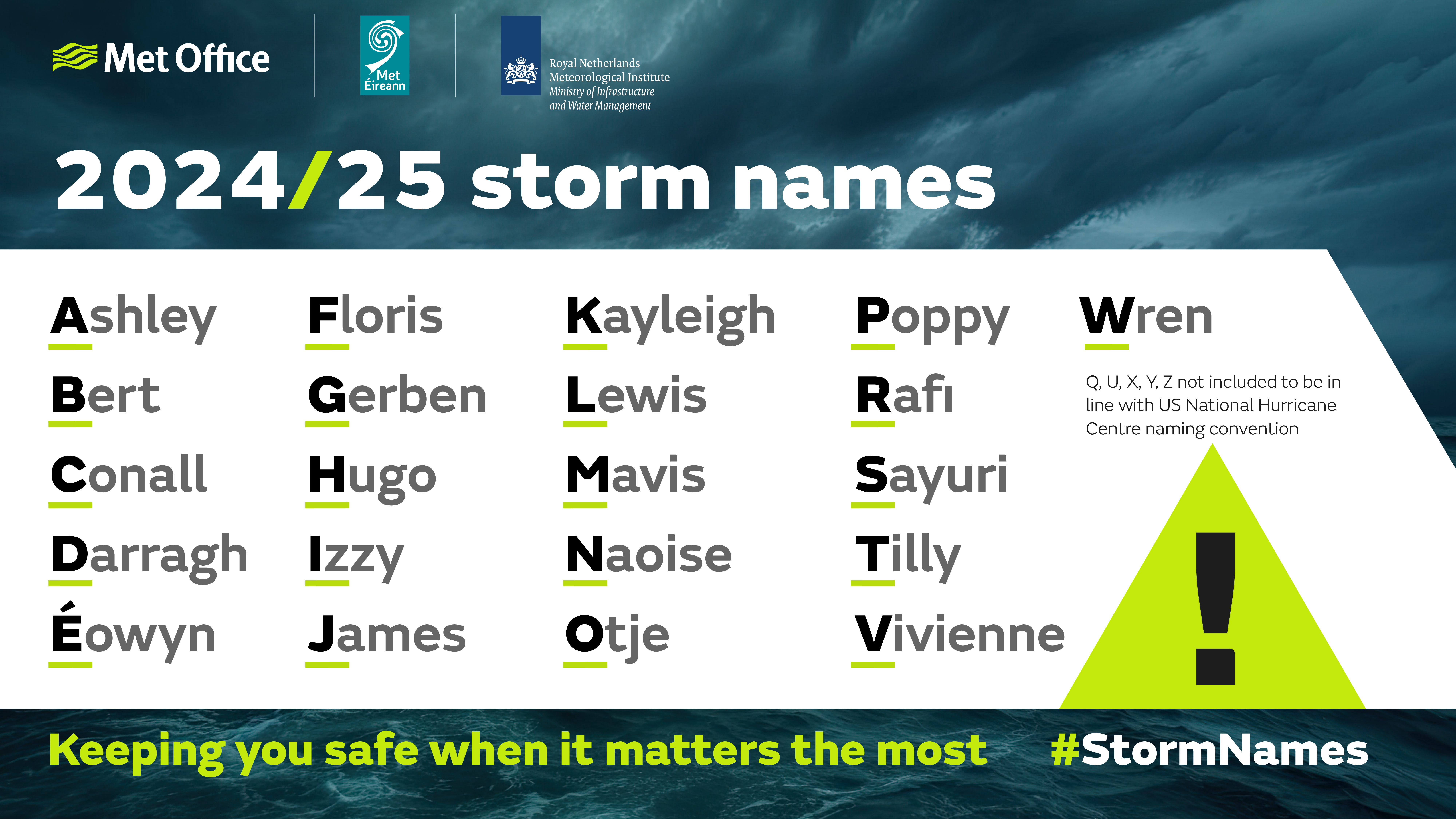

Storm names for 2024/25 announced
by Kirsty McCabe, FRMetS
Ashley, Bert, Conall and Darragh. Nope, it’s not the class register for a new school year, but the first four names chosen for the 2024 to 2025 storm season, which starts on 1st September 2024. Following hot on the heels of the stormiest season on record — where we reached the letter L for the first time since naming began — here is the MetMatters guide to who could be making the headlines this year. First though, why do we name storms in the first place?
Storms get named when they are deemed to have the potential to cause ‘medium’ or ‘high’ impacts, with wind the primary consideration. In addition to strong winds, impacts from rain and snow are also considered when it comes to naming storms. Naming storms helps to communicate the risks of severe weather — and it works.
In 2022, Storm Eunice was the strongest storm to impact England and Wales since February 2014, with a record gust speed of 122 mph. Met Office post-event surveys show that 99% of those within the red warning area for Storm Eunice were aware of the warning, and 91% of those took action to protect themselves, their property or business. The National Highways reported 21% less traffic on the roads in England on 18 February 2022 as people amended plans to stay safe.
⚠️⚠️🔴 Rare Red weather warning issued 🔴⚠️⚠️
Exceptionally heavy and persistent rain across eastern Scotland
Thursday 1800 – Friday 1200
Latest info 👉 https://t.co/QwDLMfRBfs
Stay #WeatherAware ⚠️ pic.twitter.com/Ybig9DaQ6R— Met Office (@metoffice) October 18, 2023
As the Met Office Head of Situational Awareness, Will Lang leads responses in times of severe weather. He says that post-event surveys following Storm Babet, which brought exceptional rainfall to parts of eastern Scotland in October 2023, “suggest 97% of people within the amber and red warning areas were aware of the warnings and 89% of them took action as a result”.
First introduced by the Met Office, and Met Éireann (Ireland’s National Meteorological Service) in 2015, this is the tenth year of the Name our Storms campaign to help raise awareness of the potential impacts of severe weather by providing consistent, authoritative messaging. In 2019, the Royal Netherlands Meteorological Institute (KNMI), the Dutch national weather forecasting service, joined the Western European naming group collaboration.
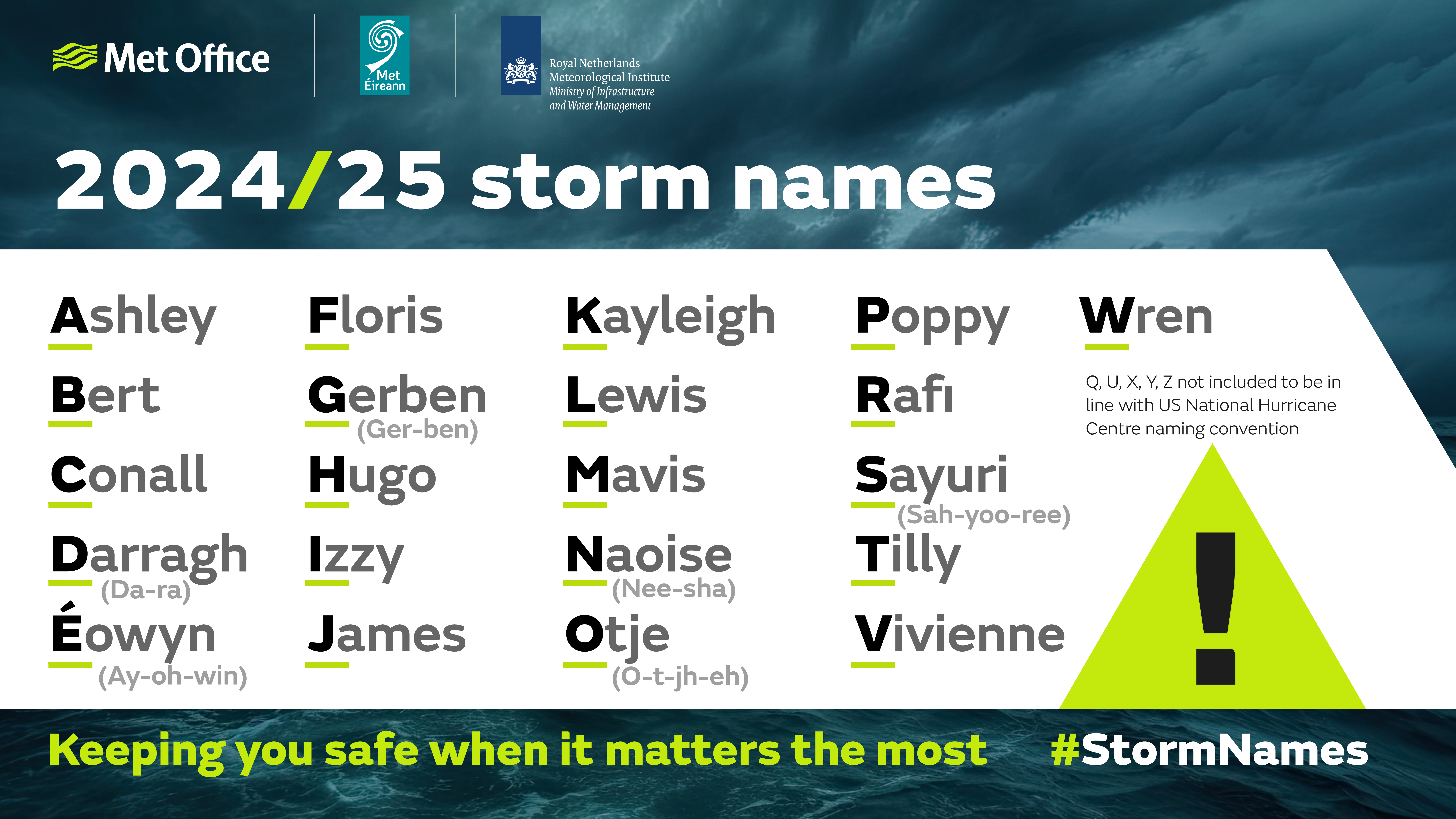
The 2024/25 UK storm season runs from September 2024 through to the end of August 2025, with storms given a name when they are forecast to cause medium or high impacts in the UK, Ireland or the Netherlands. The first storm to be named this year will be Ashley, followed in alphabetical order by Bert then Conall. Just like the US National Hurricane Center naming conventions, there are no storms for Q, U, X, Y and Z. And for the second year in a row, the list has broken with the traditional female/male ordering of names, to allow the inclusion of some of the more popular submitted names.
To avoid any confusion over naming, if a storm is the remnants of a tropical storm or hurricane that has moved across the Atlantic, the well-established method of referring to it as, for example, “ex-hurricane Kirsty” will continue. Similarly, if a storm is named by a different storm naming group (you can see the other groups in the image below) and impacts the British Isles, the given name will be used in communications, as occurred with Storms Otto (16 Feb) and Noa (12 April) in 2023.
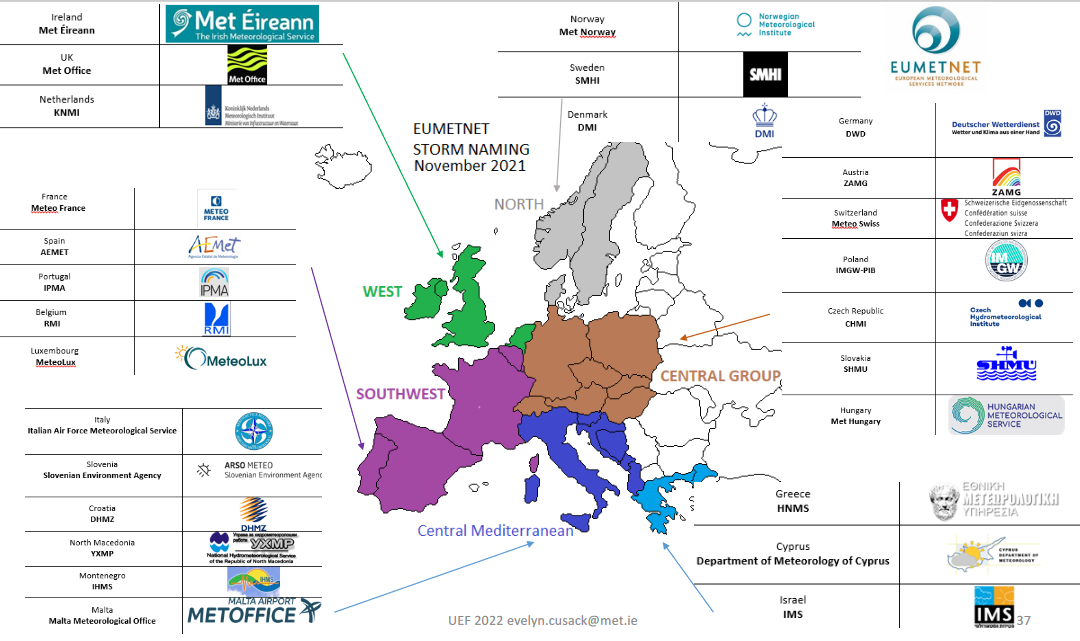
So where did the 21 names on this year’s list come from? As well as public submissions, the Met Office has marked its 170th anniversary with the names James, Lewis and Mavis (see if you can work out why before you read the rest of this article). Meanwhile, KNMI chose names suggested at an environment fair, and Met Éireann selected names chosen by children at a STEM event.
Storm seasons are highly variable in the UK. There were only 2 named storms in 2022/23, but a whopping 12 named storms in 2023/24. The arrival of Storm Lilian on 22 August 2024 took us the furthest through the list the Western European naming group has got since we introduced storm naming in 2015.
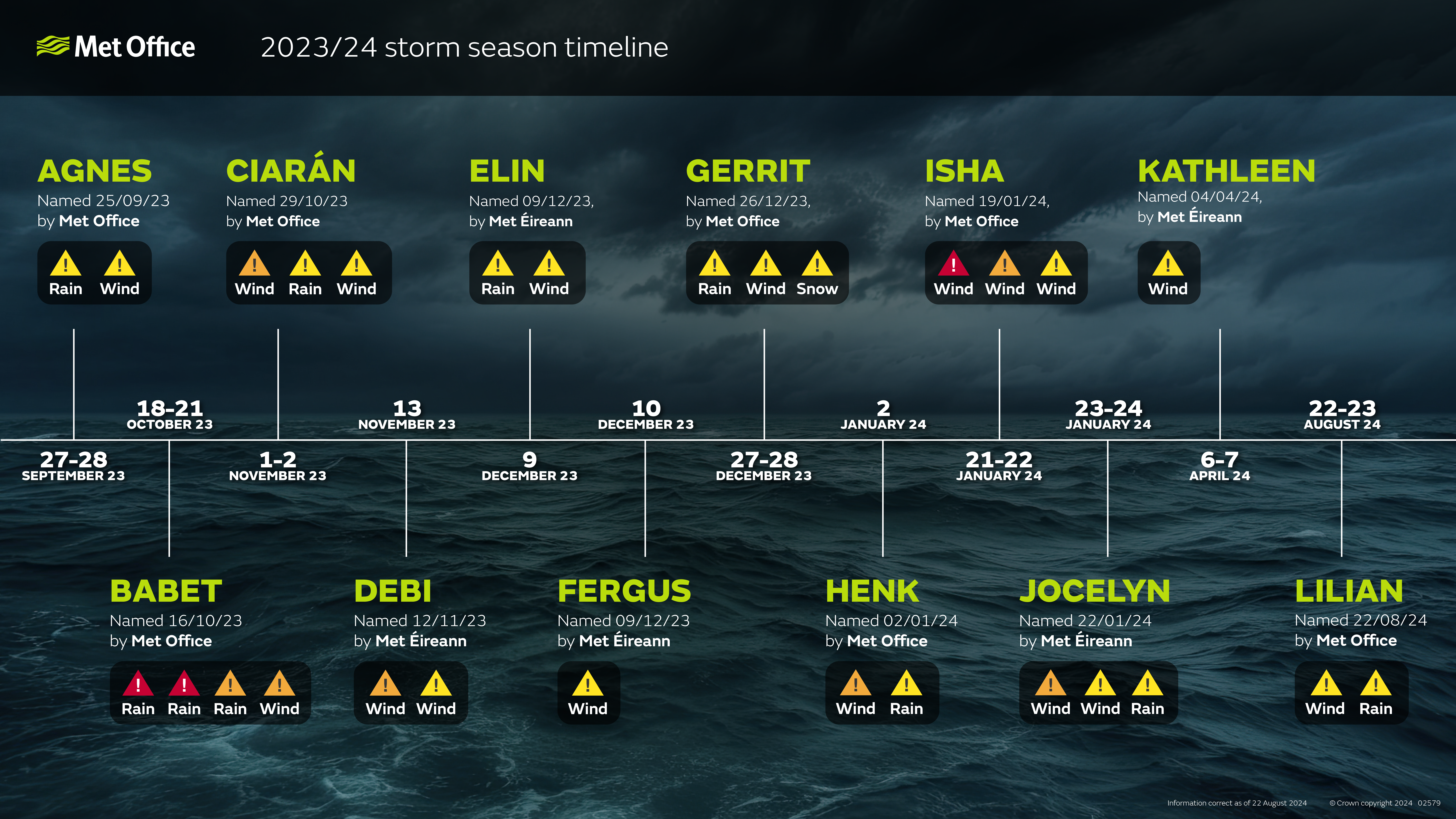
The number of storms that will affect the UK in the year ahead depends on the position and strength of our jet stream. And after being in the "wrong place" most of summer 2024, it’s safe to say we can expect the jet stream to keep us on our toes.
Who are James, Lewis and Mavis?
Three historic names from the Met Office’s 170-year history have been included in the new storm names list for the 2024/25 season, to honour those who have had an impact on weather and climate science services.

James is named after Group Captain James Stagg, whose D-Day forecast was critical to the outcome of World War II — the most important forecast the Met Office has ever produced.
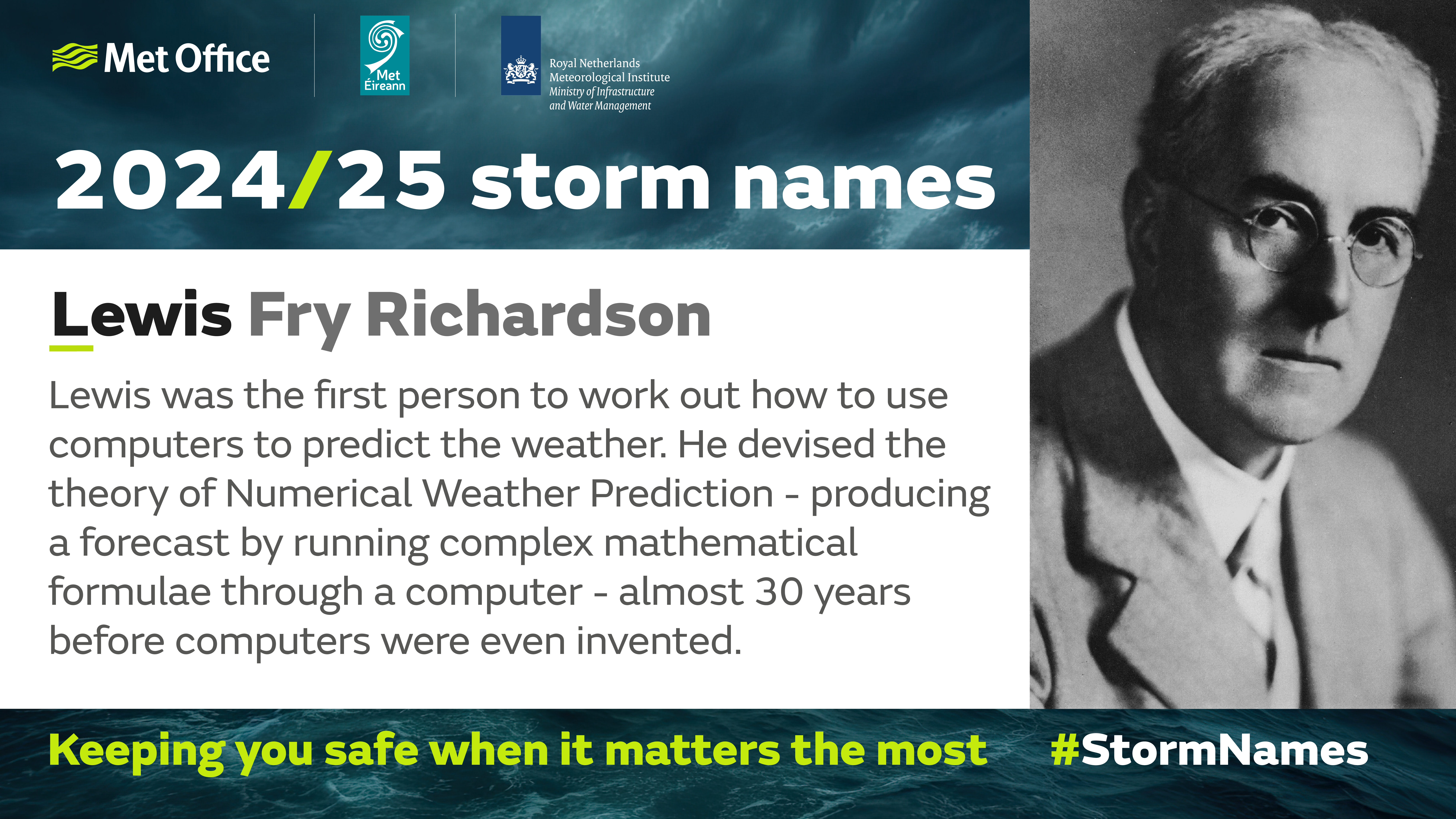
Lewis is named after Lewis Fry Richardson, who devised a theory to use maths and physics to make weather forecasts using computers (almost 30 years before computers were even invented).
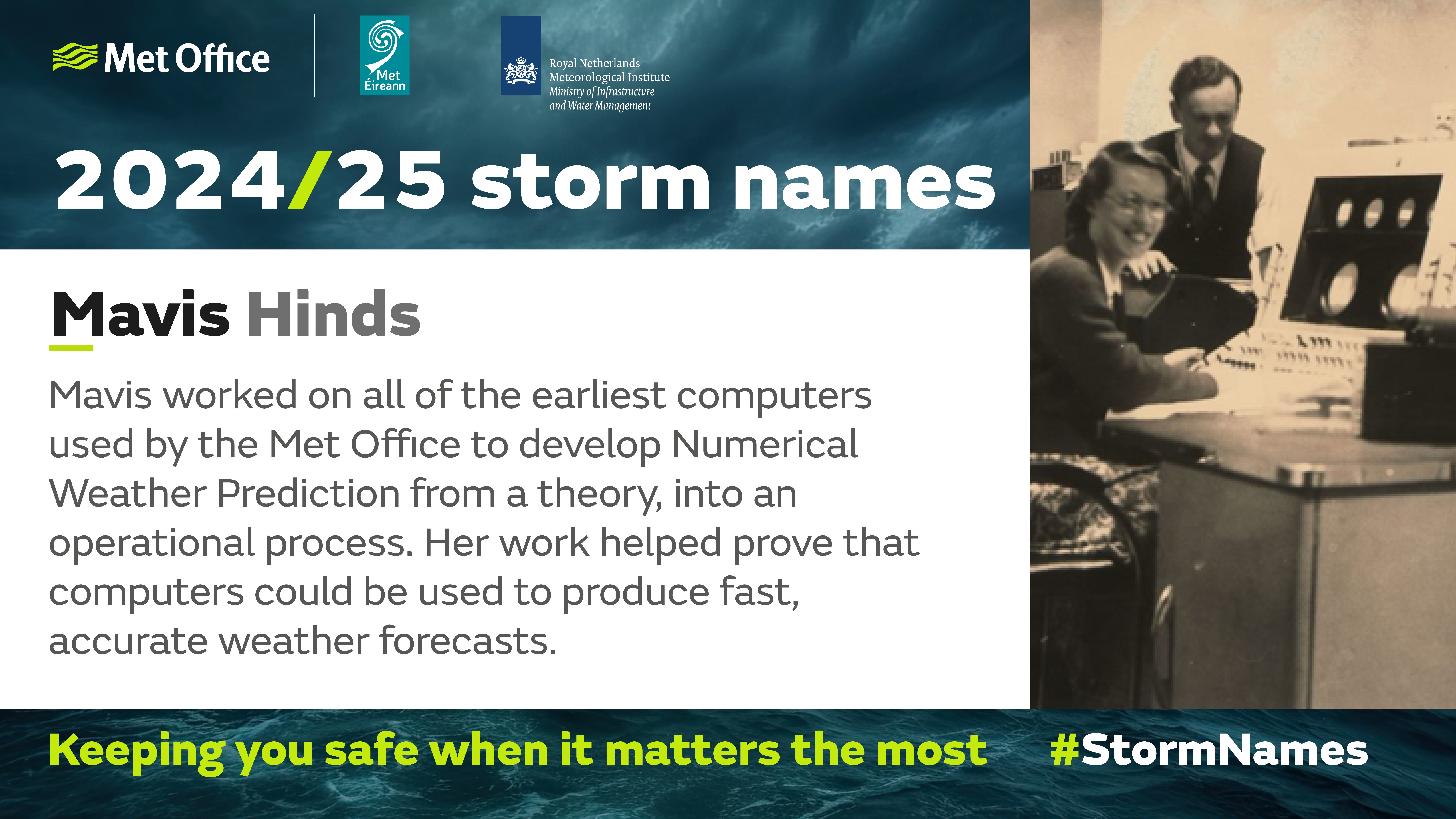
Mavis is named after Mavis Hinds, who undertook pioneering work on the earliest Met Office computers, proving that computers could be used to produce fast, accurate weather forecasts and developing Numerical Weather Prediction from a theory into an operational process.



